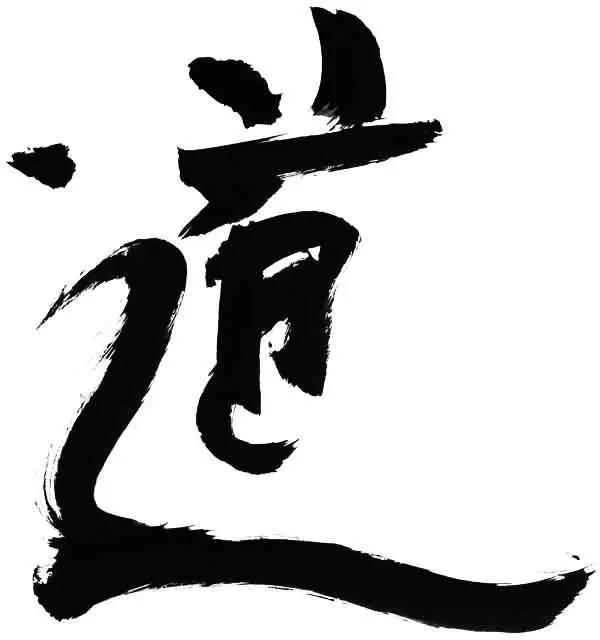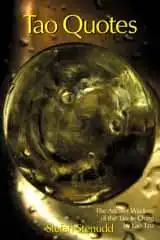|
Tao Te Ching
THE TAOISM OF LAO TZU
|
Tao or Dao
The Spelling of Chinese WordsIs it Tao or Dao, Taoism or Daoism, Tao Te Ching or Dao De Jing? The spelling of Chinese words is confusing and inconsistent. Here's an explanation of it.
No Letters in ChineseChinese writing doesn't consist of letters, but of pictures — simplified images, pictograms, which represent words. A tree, an eye, the moon, water flowing in a stream, and so on. There are thousands of them, so they take years and years to learn for Chinese school children.There are tricks to it. Many Chinese pictograms consist of two or more of a couple of hundred basic images that are combined, so called radicals. So, the word for forest is simply a few trees combined into one pictogram. It's quite clever and the choice of radicals combined can say a lot more about the word than what Western letters would. A good example of this is the word Tao, the Way (see the picture above). It combines the image of a step and that of a head. You walk in a certain direction, but you use your head — both when chosing direction and in learning from the walk. One could say that it's a way for the mind. A spiritual path, if you will. The Chinese often speculate about the meaning of a word, by analyzing its pictogram's image components. That's what they regard as etymology, the history and origins of the words. But it doesn't help much in pronunciation.
What It Sounds LikeHow a Chinese word is pronounced is anybody's guess, so that has differed widely all over China. Some clues are given, again, by the radicals. Often, one of the radicals in a pictogram is there to inform the reader of how the word is pronounced — using a common radical that everybody knows how it sounds, thereby stating "pronounce the word like this." The other radical or radicals in the pictogram explain what the word stands for.The Western alphabet is all about pronunciation. In any Western language, there is pretty much consensus about how each letter is pronounced (mostly also between different languages). So, by seeing the letters we usually know how to pronounce a word, and thereby we're supposed to know what word it is and what it means. That works, too, but when applied to the Chinese language, problems emerge. Chinese pronunciation isn't based on the Western letters and their sounds, so the Chinese have sounds that differ slightly from the ones we are accustomed to. Again, Tao is a good example. The sound for "T" is actually somewhere between a "T" and a "D" in our ears. Somewhere between the unvoiced and the voiced consonant. It could be "Dao" as well as "Tao." So, when transcribing Chinese words from pictograms to Western letters, uncertain choices have to be made. This has through the years led to a number of variations — in different languages as well as within languages. Not even English texts, with English transcription of Chinese words, are consistent.
Wade-Giles and PinyinThere are several systems for how to transcribe Chinese words into our alphabet. In the English language, the most commonly applied one in the 19th and 20th centuries is called Wade-Giles after its inventors, who developed it in the second half of the 19th century. They settled for the unvoiced "T" in Tao, Taoism, and Tao Te Ching.Wade-Giles on WikipediaMost of the Chinese classics got their established translated versions in the late 19th and early 20th centuries, so in English translations, the Wade-Giles system became the norm. Chinese words — from Taoism or from other ancient Chinese traditions — became familiar to the English speaking world in their Wade-Giles spellings. In China, though, they worked on their own system of transcribing words into the Western alphabet: Pinyin. In the 1950s, the Chinese government adapted it and propagated it for the outside world. In 1982, it was accepted as the international standard. So, from that time on, translations of Chinese texts are usually made with the Pinyin transcription.
Pinyin on WikipediaMany of the previously made translations, with the Wade-Giles transcription, remain in print, though. Also, there seems to be a reluctance among many scholars to shift to Pinyin for classical Chinese texts. That might be from a respect for the tradition and for the wish of consistency through time, but there are arguments that Wade-Giles has some advantages when it comes to classical Chinese. So, both systems of transcription continue to coexist.
Spelling on the InternetOn the Internet, Wade-Giles is still way in the lead. A Google search for "tao te ching" brings 2,540,000 hits, whereas "dao de jing" results in only 255,000, a mere tenth (February, 2012). It gets increasingly complicated by the alternate Pinyin spelling "daodejing" (as one word), which gets 205,000 hits.Interestingly, things are changing. A search in October 2015 gives 605,000 hits for "tao te ching", 223,000 for "dao de jing" and 181,000 for "daodejing". The overall number of sites about the Lao Tzu text has diminished considerably, it seems, but the Pinyin spelling share of the remainder has increased significantly. Also, nowadays, Google treats the Wade-Giles and Pinyin spellings as synonymous, mixing them in all search results if quotation marks are not used for the search words. Google Trends, which maps the popularity of search words over time, gives a different impression. There, the Wade-Giles spelling is way in the lead, although both terms have dropped drastically in use as search words since the 2007 peak. I don't know what caused the August 2007 peak, but my guess is that it had something to do with Oprah and her TV-show. Here is a live graph from Google:
Tao SpellingThe unvoiced "T" as opposed to the voiced "D" are far from the only differences in transcription. Here's a list of names and other words from Taoism, spelled in Wade-Giles and in Pinyin:
About CookiesMy Other Websites:I Ching OnlineThe 64 hexagrams of the Chinese classic I Ching and what they mean in divination. Try it online for free.
Qi Energy ExercisesThe ancient Chinese life energy qi (chi) explained, with simple instructions on how to exercise it.
Life EnergyThe many ancient and modern life force beliefs all over the world explained and compared.
Taoismen på svenska
Other Books by Stefan StenuddClick the image to see the book at Amazon (paid link).
The Greek philosophers and what they thought about cosmology, myth, and the gods. |
 Tao Te Ching
Tao Te Ching Tao Quotes
Tao Quotes Fake Lao Tzu Quotes
Fake Lao Tzu Quotes Cosmos of the Ancients
Cosmos of the Ancients Qi — Increase Your Life Energy
Qi — Increase Your Life Energy Aikido Principles
Aikido Principles Life Energy Encyclopedia
Life Energy Encyclopedia Archetypes of Mythology
Archetypes of Mythology Stefan Stenudd
Stefan Stenudd